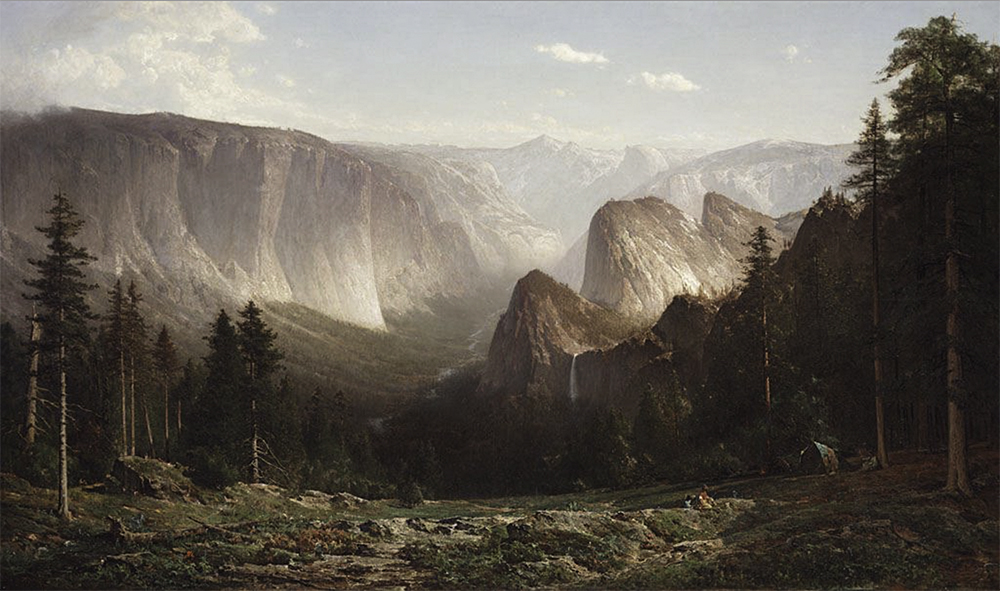
The passage above is from the personal diary of California gold miner William Abrams. It was written on October 18, 1849 on Abrams' return to San Francisco from a summer in the Sierra Nevada Mountains. Abrams had been sent to explore the Merced River to its source in the Sierras when he made a brief, chance, visit to a point overlooking Yosemite Valley. The diary disappeared among family papers after his death and was not made public until the mid 1900s. It is, however, among the first known written impressions of El Capitan, Bridal Veil Falls, and Half Dome (the Rock of Ages) as seen from the valley rim. In the years since Abrams stood on this spot millions of visitors have painted and photographed the scene. This is a story about the first and lasting impressions left by Yosemite in the minds of early visitors and about their efforts to preserve the wonders of the place.
Parks for the preservation of landscape, wildlife, and history are found around the world today in places as different as Costa Rica, New Zealand, and Kenya. They owe their existence in large part to the example created by the United States beginning with Yosemite in 1864.
Yosemite is special in several important ways. Geologically, the park is a series of glacially carved, white granite canyons, many over a thousand feet deep. The most spectacular of these is Yosemite Valley itself. Archeologically, humans have populated Yosemite on and off going back almost to the end of the last ice age over 10,000 years ago. Villages of Miwok and Paiute natives existed in Yosemite until shortly after first contact with European settlers in the 1850's. Their legends provide an important and interesting perspective on many of the park's most spectacular features. And, historically, Yosemite has provided an important laboratory for the evolution of the national park idea. Writers like John Muir and Frederick Law Olmstead, artists like Albert Bierstadt, Thomas Hill, and Chris Jorgenson, and photographers like Carlton Watkins helped acquaint potential visitors and legislators with Yosemite's wonders in the late 1800s. Early Yosemite business people like Thomas Hutchings and David and Jeannie Curry helped shape how Yosemite was made accessible to visitors. And far sighted national leaders like Teddy Roosevelt brought a broad vision of preserving special pieces of the American environment.
As these individuals championed the cause of Yosemite in its early years and helped to define what it meant for a place to be a national park questions arose about the park's management that are still debated today. What was the purpose of the park? To what extent should the park be preserved in its natural state? What changes in the park's environment should be allowed? How should visitors be accommodated? By careful consideration of such questions students can be better prepared to enter into this ongoing debate.
title bar image from Thomas Hill, "View of Yosemite Valley," 1885, downloaded from WikiMedia Commons, July, 2019.
¹ Weldon Fairbanks Heald (1907-1967), “The Abrams Diary,” October 18, 1849 from “Notes and Correspondence,” Sierra Club Bulletin 32:5 (May 1947), 126-127.
images from Guy Schmickle, "Valley Overlook," 2003 and Thomas Hill, "Great Canon of the Sierra, Yosemite, 1871," courtesy of the Crocker Art Museum. Crocker Art Museum image files and associated text are to be used for non-commercial, personal and private use only.
